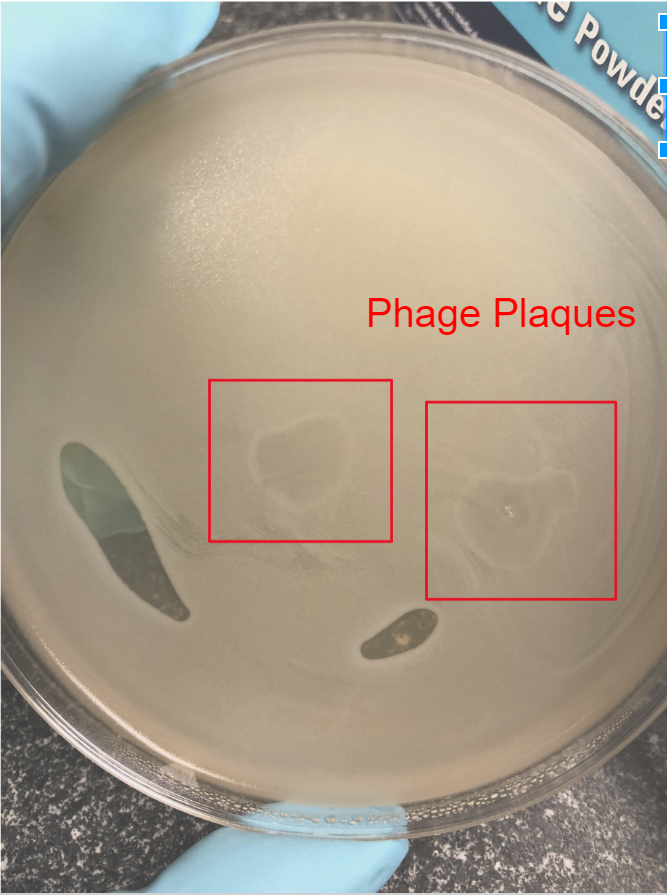
Phage Background
Bacteriophages are viruses that exclusively attack bacteria and lyse them. They have been researched as an alternative treatment method to antibiotics for a long time. In phage therapy, a phage inserts its genetic material into a host bacteria’s DNA to allow it to reproduce using the host. The phage then causes the host to lyse, killing the host and allowing for the spread of the phage to other bacteria. A perk of phage therapy is that phage’s are often very specific to their bacterial hosts. Meaning phages will often only attack specific bacteria.Phage sub-Project Summary
The phage aspect of this project involved utilizing a phage compatible with S aureus in order to deliver a kill mechanism into S aureus. In order to do this the team first set out in finding a suitable phage for this task. This involved having the phage team investigate research articles in search of S aureus phages. Of the several phages found, the temperate phage present in S aureus strain Btn1260 was found to be the most ideal for our project. This phage was chosen due to not encoding any virulence factors or toxins making it very ideal.Once a phage was chosen the team then went on to investigate this phage in experiments. Dr. Ashley Robinson at the University of Mississippi was kind enough to send us some samples of S aureus Btn1260 for experimentation. The first experiment the team ran was a phage induction using mitomycin C. The goal of this experiment was to determine if the phage encoded in the strains DNA was in fact inducible and characterized by the strain. Mitomycin C was used as an inducing agent to cause stress to the bacteria and force the phage to be induced. This phage was then isolated through a complex filtration procedure to be plated and tested for host specificity.
After the phage was induced and isolated, testing that the phage induction worked and the phage was indeed present was the next step. In order to do this the team used a method of soft agar plating to plate a lawn of host bacteria on top of some bottom agar. The phage filtrate/lysate was then micro-pipetted on these hosts and left to incubate overnight to see if the phage was successful in attacking the S aureus bacteria. A total of 8 different bacterial hosts (courtesy of Dr. Gentry-Weeks) were tested of which two showed more pronounced results than the rest. An image of the Btn1260 phage plated on host S aureus 1040 can be shown below. From this experiment we were able to conclude that the phage was in fact inducible and did work on some S aureus bacterial hosts.

In the future, further testing will be conducted with the phage. The phage will be re-induced and re-plated on hosts using different concentrations to get better phage plaque results. Once this is done experimentation will be conducted in order to integrate a secondary kill mechanism into the phage backbone.


